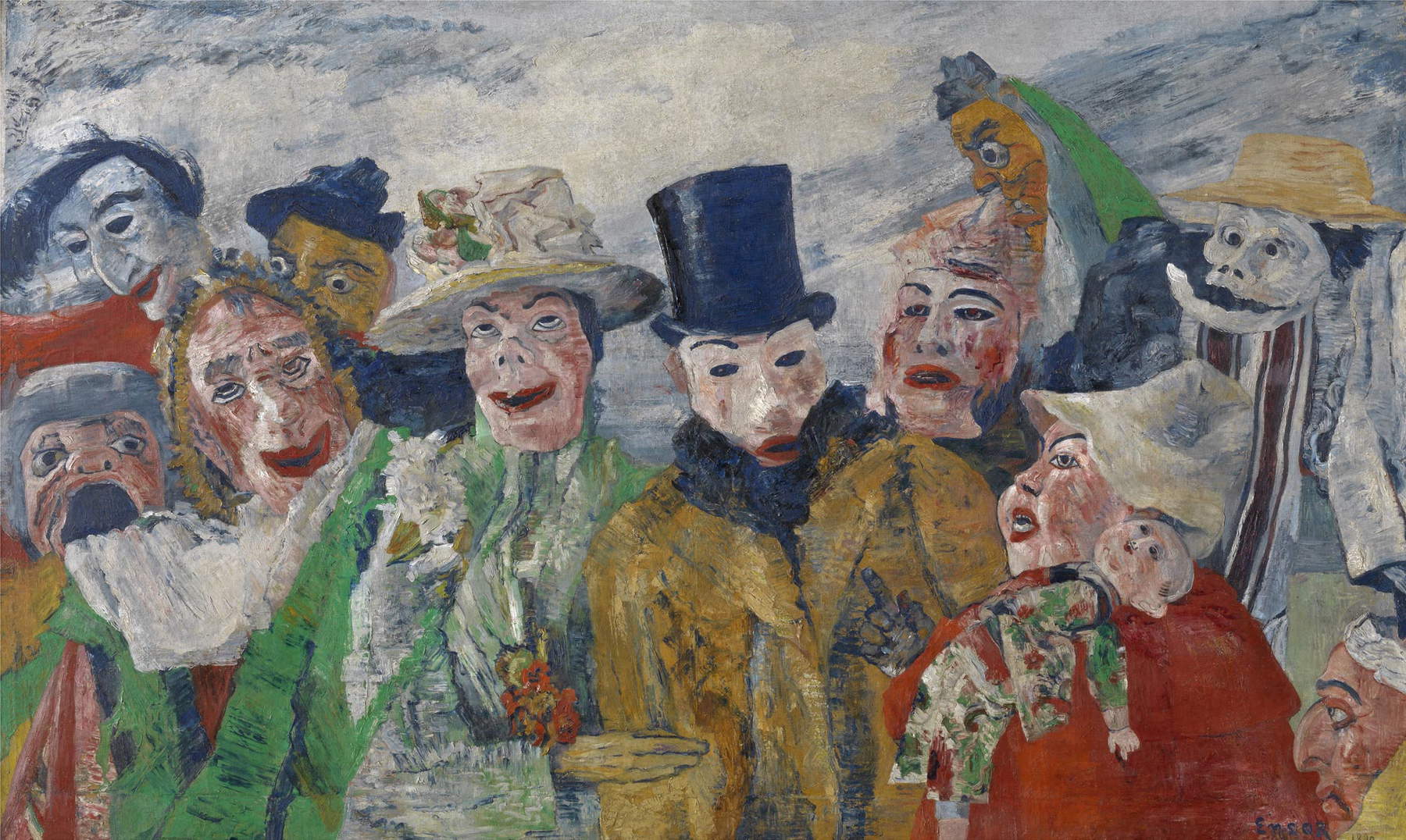Antwerp opens four exhibitions on James Ensor, each in a different museum in the city
In the year dedicated to James Ensor (Ostend, 1860 - Ostend, 1949), the time has come in Flanders for Antwerp, which, following Ostend, from Sept. 28 launches a program of four exhibitions exploring the wide range of artistic production and contemporary influence of the Flemish Modern Master. Here are what they are:
From September 28, 2024 to January 19, 2025, KMSKA, Koninklijk Museum voor Schone Kunsten (Royal Museum of Fine Arts Antwerp), hosts the exhibition Ensor’s Wildest Dreams. Beyond Impressionism. The museum is hosting one of the largest James Ensor retrospectives ever held in Belgium, telling the story of how the artist subverted the artistic conventions of his time and redefined the boundaries of art. Works from prestigious international museums, such as MoMA and the Musée d’Orsay, dialogue with masterpieces already part of KMSKA’s permanent collection, underscoring Ensor’s revolutionary impact. The museum, which boasts the largest and most diverse collection of Ensor’s works in the world, is also home to theEnsor ResearchProject, a research center dedicated to the master of modernism. The KMSKA therefore proves to be the ideal place to host this outstanding tribute to one of the fathers of modernism. The exhibition focuses on two fundamental aspects of Ensor’s art: how the artist, an exponent of the Belgian avant-garde, sought to transcend Impressionism and represent the wildest dreams of our imagination.
The exhibition Ensor in Search of Light. Experiments on Paper, is hosted at the Museum Plantin-Moretus from September 28, 2024 to January 19, 2025. For the occasion, the Museum is transformed into a laboratory to explore Ensor’s graphic experiments. The exhibition highlights his printmaking and engraving techniques, highlighting the creative process behind his best-known graphic works. Preparatory drawings, copper plates and prints in different stages of processing are displayed, revealing previously unseen and unexpected details that enrich the understanding of his art. At the same time, our museum’s 18th-century reading room will focus on Ensor and Verhaeren through the mini-exhibition Ensor filleted by Dangerous Cooks. The mini-exhibition starts from Verhaeren’s extraordinary collection that we keep in the museum, to which very limited attention has been paid until now. The highlight here is Ensor’s particular drawing The Dangerous Cooks belonging to the collection.

The FOMU (Museum of Photography) is hosting for the first time in Belgium from September 28, 2024 to February 2, 2025, a retrospective of American photographer Cindy Sherman entitled Cindy Sherman - Anti-Fashion. Known for her satirical self-portraits and critiques of society, Cindy Sherman shares with Ensor an interest in exploring identity and theuse of mask. The exhibition places Sherman’s work in dialogue with themes addressed by Ensor, offering a contemporary reinterpretation of issues such as gender, stereotypes and fluid identities. With more than 100 works, spanning the 1970s to the present, the retrospective provides a broad overview of his contribution as one of the major figures in contemporary art. The Anti-Fashion exhibition explores in detail Sherman’s fascination with fashion and the synergy between her personal work and assignments in the fashion world. Since the 1980s, the photographer has worked regularly with prominent fashion houses such as Comme des Garçons, John Galliano and Balenciaga, as well as magazines such as Vogue, Interview and Harper’s Bazaar. With no interest in glamorous photography, Sherman creates provocative images of characters far from traditional ideals of beauty, questioning predefined aesthetic canons. Anti-Fashion is an exhibition organized by the Staatsgalerie Stuttgart in collaboration with Cindy Sherman’s studio in New York and the Hauser & Wirth gallery.
Finally, from Sept. 28, 2024 to Feb. 2, 2025, the Fashion Museum (MoMu) explores the concept of mask and transformation with the exhibition Masquerade, Make-up & Ensor. The exhibition explores the link between personal expression, fashion and makeup, highlighting how the latter has become a powerful means of artistic expression and a symbol of creative freedom. The theme is perfectly intertwined with the works of James Ensor, who, beginning in 1888, often used masks, clothing and accessories to unmask the true nature and hidden feelings of his characters. Historically, makeup has been viewed with suspicion, associated with the idea of masking one’s face. Ensor, a critical observer of society, captured people’s insecurities and vanities, turning the mask into an ambiguous tool of revelation rather than concealment.
 |
| Antwerp opens four exhibitions on James Ensor, each in a different museum in the city |
Warning: the translation into English of the original Italian article was created using automatic tools. We undertake to review all articles, but we do not guarantee the total absence of inaccuracies in the translation due to the program. You can find the original by clicking on the ITA button. If you find any mistake,please contact us.





























